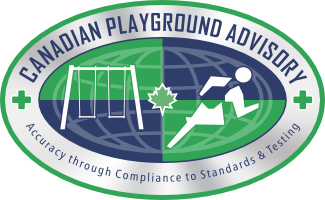Accessible Playground Surfacing
Providing a playspace that is accessible to children of varying abilities is a laudable goal. At the present time the CSA Z614-98 standard for Children’s Playspaces and Equipment does not deal with this issue. As a result we must look to the United States where ASTM has developed a performance standard for the determination of an appropriate surface for this purpose. This standard, previously known as ASTM PS-83, has now been republished as ASTM F1951.
The traditional accessible surface has been the synthetic such as the EVERPLAY poured in place or EVERPLAY mats systems. These surfaces allow for persons of all abilities access to the play structure and as well meet the impact attenuation required for the surface. In addition the EVERPLAY can be installed at a slope to allow for transition from one grade to another. The alternative to the total EVERPLAY surface is one consisting of Engineered Wood and EVERPLAY Mats in the high traffic and high maintenance areas. These Mats are permeable to air and water. This allows for the transpiration of moisture and does not allow for rodents and insects to build a habitat as can happen with solid mats.
The ASTM F1951 relates specifically to passage across the play surface of a wheelchair. At the present time the test is only performed at one location in California and manufacturers of surfaces must submit their materials there for testing. Although the test can be performed on any play surface, the typical surfaces being tested are loose fill materials and are primarily Engineered Wood systems. Traditional surface materials such as sand or pea gravel will not pass this test and are therefore eliminated from use as an accessible surface.
The traditional accessible surface has been the synthetic such as the EVERPLAY poured in place or EVERPLAY mats systems. These surfaces allow for persons of all abilities access to the play structure and as well meet the impact attenuation required for the surface. In addition the EVERPLAY can be installed at a slope to allow for transition from one grade to another. The alternative to the total EVERPLAY surface is one consisting of Engineered Wood and EVERPLAY Mats in the high traffic and high maintenance areas. These Mats are permeable to air and water. This allows for the transpiration of moisture and does not allow for rodents and insects to build a habitat as can happen with solid mats.
The ASTM F1951 relates specifically to passage across the play surface of a wheelchair. At the present time the test is only performed at one location in California and manufacturers of surfaces must submit their materials there for testing. Although the test can be performed on any play surface, the typical surfaces being tested are loose fill materials and are primarily Engineered Wood systems. Traditional surface materials such as sand or pea gravel will not pass this test and are therefore eliminated from use as an accessible surface.



